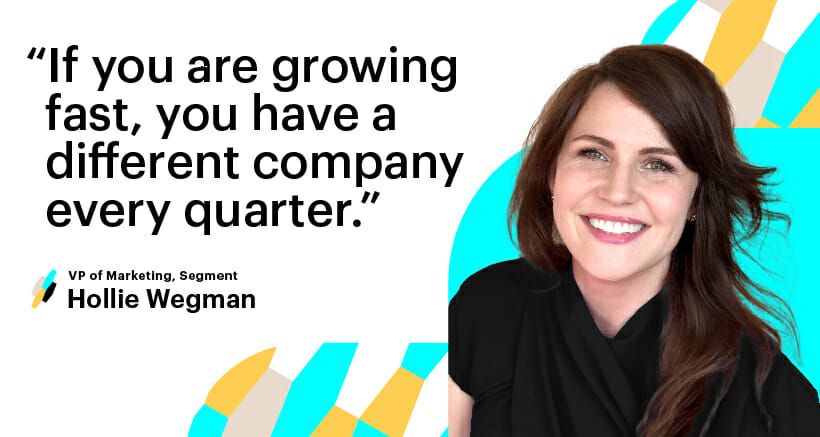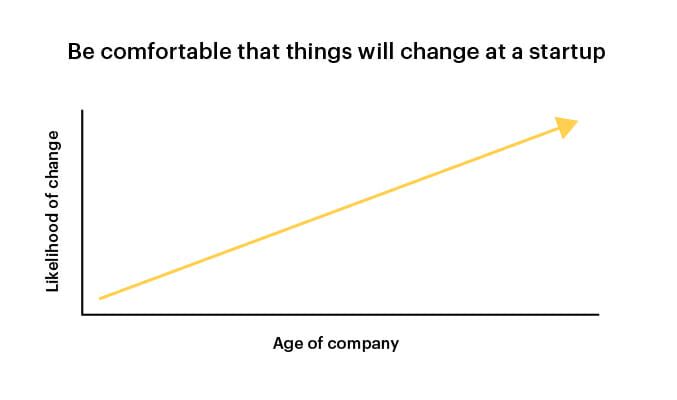
How marketing helped Segment go from 6 months runway to a $1.5 billion dollar valuation
Six years ago, Segment were just four engineers sitting in an apartment on Russian Hill in San Francisco.
They had a great product, a few hundred customers but there was a problem – they had just 6 months of runway. This week on Scale, we’re getting an inside look at how marketing helped them grow to a $1.5 billion dollar valuation.
Startup marketing is tough. In the not too distant past, you could polish off a high level message and a slide deck and let the salesperson handle it from there. But today, marketing is the primary driver of revenue at your typical, fast growing B2B startup.
For marketers responsible for driving that growth on the frontline, it’s never been harder to deliver results in an increasingly competitive SaaS landscape. Over the last five years, overall customer acquisition costs have risen almost 50% – and while paid CAC is still higher than organic CAC (e.g. content marketing), organic costs are rising fast too.
As Hollie Wegman, VP of Marketing at Segment, knows from her time at both Fortune 500 companies and early-stage startups preparing for their IPOs, marketing success comes down to finding the right people for the job.
With marketing hiring projected to increase 10% by 2026, this might look easy. But scaling a marketing team to the heights Segment have isn’t as simple as putting a bunch of A-players in a room and getting them to start churning out paid advertising. A slapdash approach to scaling marketing can result in confusion, frustration, conflict, turnover and ultimately poor business performance.

Nobody knows this better than Hollie. During her career, she’s seen firsthand the impact (and stress) rapid growth and expansion can have on a team. In order to scale successfully, she says marketing leaders need to be able to anticipate, envision, and articulate business requirements across multiple dimensions, and then deploy the right resources at the right time with the right scope to dominate the market.
If you’d like to hear more, you can listen to our full conversation above, or read Hollie’s insights below.
This is episode five of Scale, a brand new podcast series on moving from startup to scale up. If you enjoy the conversation and don’t want to miss the rest of the series, just hit subscribe on iTunes, stream on Spotify, Stitcher, or grab the RSS feed in your player of choice.
Get the specialist-generalist balance right
It’s a natural law of startups: what gets you off the ground at first won’t keep you in the air forever. In the beginning, a company might only have the resources for a one-person marketing department. That employee must wear many hats, from product marketing, to directing the content strategy, to generating leads, to understanding and maximizing the most profitable channels.
If said marketer is good at their job, revenue will grow quickly: so quickly that at a fast-moving company like Segment, it can feel like you’re working for a different business from quarter to quarter. It follows that a corporation that’s going to truly break through requires its marketing team to evolve swiftly, which usually means hiring specialists who are given sole ownership over particular tasks.

While this is an undeniable advantage to any startup, misusing newly hired specialists on your team will result in barriers to strong team collaboration. When a company adds specialists to its roster, it can also run the risk of having workers operating in their own separate siloes.
According to Hollie, the key to finding the right balance is making sure knowledge and execution are democratized across your marketing team.
“As new functions and roles arise, make sure that everybody in a function (generalist or not) knows what everybody else in marketing is doing. It’s really important not to get in your specialist silo. If you find yourself saying, ‘I just do email marketing,’ or ‘I have no idea about events,’ that’s a bad situation to be in. Because when someone comes to almost anyone in marketing, we kind of all know the same answers.”
The constant need for change in marketing
Hypergrowth can pose a major challenge for your company. Teams can be stretched and under-resourced. Goals, priorities and roles are in a constant state of flux. Every meeting can feel like an exercise in firefighting.
The trick is to build a team that can navigate challenges gracefully, and in some cases even make it stronger. Once again, it comes down to finding people with the right attitudes: up-for-anything workers who aren’t afraid to discover, as Edison did, all the ways not to craft a light bulb (or, in this case, a marketing campaign).

For Hollie, developing and maintaining this perspective is key:
“You have to make sure everyone understands we’re in a startup, and changes are coming. When you’re growing as fast as Segment is (or Envoy or Mulesoft was), change is inevitable. You’re almost like a new company every quarter. I make sure that everyone in marketing knows we’re going to change, and that softens a little bit of the anxiety around changes that might happen in the org.”
Finding your team’s Goldilocks process
At an early-stage marketing team, “process” can sometimes feel like a straight jacket restricting innovation or efficiency. For that reason, members of a young company often prefer to have lightweight, flexible processes that give them the freedom to innovate.
As the business becomes more professional and profitable, there are benefits to establishing a playbook for decision-making. New cohorts of employees (who lack the tribal knowledge that led to certain procedural choices) need to know how to do things, lest they waste time inventing solutions to problems that have already been solved.
This is the awkward adolescent stage of marketing, and it again requires a balanced approach: not too hot, not too cold; not too restrictive, not too flexible.
“The value in process is that it helps people predict what’s coming. It helps people understand how to prioritize. But it can be at odds with moving quickly. One of the things I like to do with my team is choose the appropriate level of process, but at the same time, don’t let process take over.”
It’s about helping people feel empowered and supported. You want to move fast when it makes sense and employees should have the autonomy to do so.

There’s no such thing as overcommunication in your marketing team
To quote Foursquare co-founder Dennis Crowley, one of the most important leadership attributes at a startup is this: “Overcommunicate. Overcommunicate. Overcommunicate.”
In a fast growing startup, it’s better to tell someone something they already know than to not tell them something they needed to hear. Even if something seems so obvious that doesn’t need to be said, overcommunicate that too.
There are tools that can help group communication (company meetings, email threads, all-hands Slack channel, for example), but it’s also important to take the time to interface with each team member individually. In their first days, you’ll focus on relationship building and onboarding: getting new hires up to speed on company processes and values. But as time goes on, you’ll shift to pulse-checks: making sure employees continue to be happy and motivated and eliminating potential roadblocks to their success. You don’t want to leave anyone behind.
This style of effective communication hinges on the soft skill of listening, which can eradicate tons of problems — whether it’s a project that’s going off track or an individual employee who might have been unhappy during a meeting. As Hollie knows, this becomes more difficult (and all the more necessary) the quicker the team expands.
“One mistake – and something I’ve learned a lot from – is not maybe keeping people informed as the company grows. For instance, if you have something happening in marketing, and in quarter one, there are about three or four people you need to keep informed. By quarter two, the team’s grown so much, there might be six or seven people you need to keep informed. You might leave them off the list of who needs to be informed about this thing, and then that can be a lesson that you need to really think through. Okay, this organization is constantly changing. Who needs to be informed about what? Then you have to find ways to keep them informed.”
It’s a delicate line to walk: you have to offer guidance while also empowering your employees to deploy their plans. It’s a dance that might be best summed up by a note Hollie keeps pinned at home: “The quieter you are, the more you hear.”
This post is part of Scale, a place where we explore how businesses are driving growth through customer relationships. Scale offers advice and guidance from support, marketing, and sales leaders who are charting new paths for their customers – and their companies.








